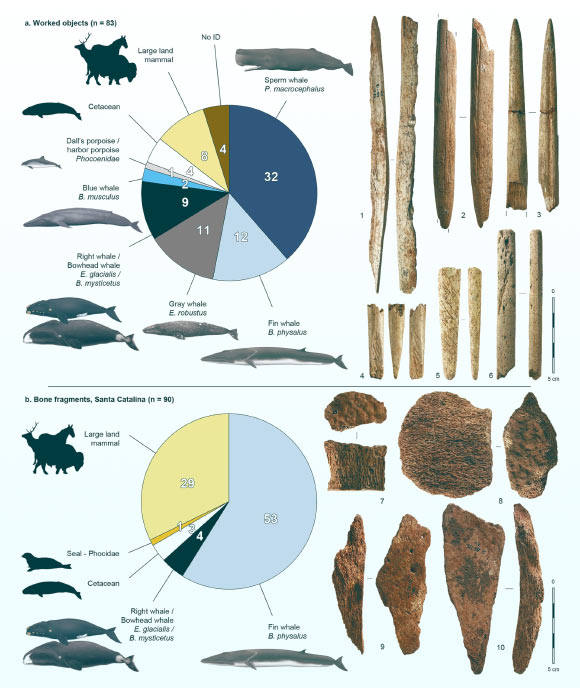Now Reading: 20,000-Year-Old Whale Bone Tools Unearthed in Spain
-
01
20,000-Year-Old Whale Bone Tools Unearthed in Spain
20,000-Year-Old Whale Bone Tools Unearthed in Spain

Quick Summary:
- Archaeologists studied 173 paleolithic whale bone artifacts from 26 cave and rockshelter sites in Spain and southwestern France, mainly around the bay of Biscay.
- Among the bones were tools from five species of large whales, including sperm whales, fin whales, blue whales, and gray whales.
- Radiocarbon dating placed some artifacts at approximately 19,000-20,200 years old-the earliest known use of whale remains as tools.
- Researchers used mass spectrometry (ZooMS) for species identification when traditional methods were insufficient due to fragmented bones.
- Findings indicate that ancient humans relied on whale materials for food and tools in coastal survival strategies.
- Chemical analysis suggests shifts in feeding habits between ancient and modern whale populations potentially linked to changes in marine ecosystems over time.
- The study emphasizes early human interactions with marine mammals and their ecological importance.
Indian Opinion Analysis:
These findings are meaningful as they underline the resourcefulness of Paleolithic societies in utilizing large marine mammals for survival needs such as food and toolmaking. India may draw parallels by exploring its archaeological record along diverse coastlines like Gujarat’s Harappan sites or Tamil Nadu’s ancient trading ports to understand early human interactions with marine ecosystems locally.
Moreover, the shift in whale feeding habits noted by researchers highlights how environmental changes influence species behaviour-a subject relevant today amidst India’s efforts to preserve rich biodiversity under climate change threats.In a broader sense, such discoveries showcase the interdependence between advanced civilizations-ancient or modern-and enduring engagement with natural resources.























